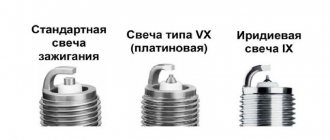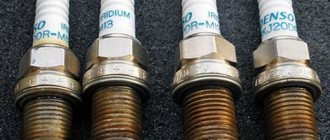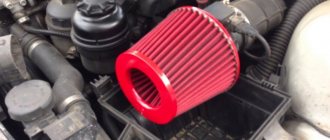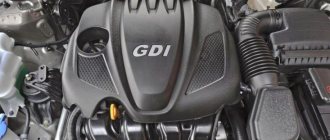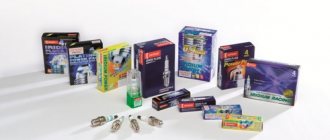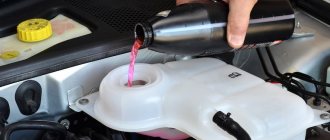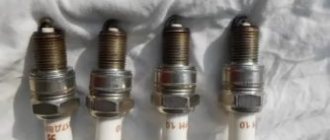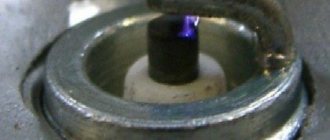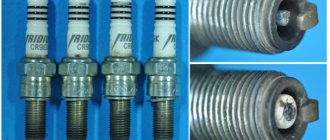- home
- Engine
- …
Spark plugs are a fairly important element in a car engine. A lot depends on their operation - stable operation, starting (both cold and hot), fuel consumption and even power. Therefore, manufacturers are constantly working on this element, improving it. One of these “evolutionary leaps” is the iridium (some call it platinum) spark plug. However, if you read reviews on the Internet, opinions categorically differ! Some write that this is a “miracle of miracles” with all the advantages that I listed above (it also has a huge service life). Others write that there are no changes at all, and the engine works even worse! WHERE IS THE TRUTH? I have experience with such elements, and therefore there is something to tell and show, let's think about the pros and cons (as usual there will be a video version at the end) ...
At the very beginning I would like to talk a little about iridium and platinum. There are rumors that they are one and the same. This is not entirely true, of course, iridium is a platinum group metal, but it is a transition element, and the production methods are slightly different (we’ll talk about this below). But platinum options (for example BOSCH Platinum) have a truly platinum, but very thin central electrode, which is locked (as if poured) into a dense ceramic insulator.
Although in fairness it is worth noting that some manufacturers call iridium versions platinum, or cover the contact points with platinum using a similar technology to iridium (this is not the point now). I will have a separate article about this, so be sure to follow the blog.
Iridium metal
I’ll insert a little information for general development, you need to understand what kind of element this is
Iridium is an element with atomic number 77 (in the D.I. Mendeleev system). A very hard, refractory, silvery-white transition metal of the platinum group. It has high density, high corrosion resistance, resistance to acids and alkalis (even at temperatures of 2000 °C). It is found extremely rarely in terrestrial rocks, therefore it is quite expensive and valuable. Melting point - 2466°C.
As you can see, it is an almost ideal metal for use in a combustion chamber, if not for its price.
Basic properties
The first company to use iridium, thereby improving the quality of SZ, was the Japanese company NGK. The reason why iridium was chosen was that this metal has a very high melting point, exceeding even platinum. In addition, it has high resistance to corrosion processes.
The reliability of spark formation can be increased by increasing the gap between the electrodes or reducing the diameter of the central electrode due to the use of chemically resistant noble and refractory metals for its manufacture. If you increase the gap, it becomes necessary to increase the voltage for sparking. When using noble metals, the cost of protective equipment increases. Manufacturers have taken both paths.
Since the 1980s, iridium in the form of an alloy has been used to produce igniters. Due to its fragility and low electrical conductivity, iridium is not used in its pure form. Its best properties are manifested in alloys. Iridium electrodes are made by laser welding. The iridium alloy is a good conductor, so it became possible to reduce the diameter of the central electrode.
Due to the small diameter of the tip, high voltage is not required to form a spark; the charge is concentrated on a minimal area. Therefore, high-quality ignition is guaranteed in any driving mode, and the fuel will burn completely. The engine power increases, it runs smoothly without failures, which allows you to quickly gain speed. Iridium maintains a constant gap between the electrodes, ensuring the safety of the spark and eliminating problems with starting the power unit.
Problems with conventional spark plugs
Now I will not talk in detail about the operation of these elements. But we need to understand that the main load is carried by two electrodes - central and side (a spark passes between them). It is they that wear out over time and the element itself needs to be replaced
Typically, the side electrode is made of steel, which is alloyed with manganese or nickel.
The central electrode is made of iron-nickel alloys with the addition of copper and chromium.
Not only is a strictly defined gap set from the factory, but a certain resistance is also selected (about them below) so that the ignition coil can “break through” it and give the desired strong spark.
Over time, usually 50-80,000 km, the electrodes become smaller in size, the gap grows and the coil cannot effectively produce a spark (it turns out weak), the car does not pull, and fuel consumption may also increase.
This happens because the central and side electrodes simply lose some part of the metal; it simply burns out from constant discharges.
If such a spark plug is not replaced in time, or the gap is not adjusted correctly, the ignition coil may fail (because it needs to work harder to “break through” the greater height between the electrodes)
That is why spark plugs are replaced at 3-4 maintenance intervals, that is, 45 - 60,000 km.
Cost of iridium spark plugs
In the modern world, the cost of a particular part is an important factor in making a purchasing decision. Despite their considerable cost, iridium spark plugs are still cheaper than platinum ones. This is explained by the fact that this metal is not in great demand on the market. Because the production of candles requires little of it. So, the tip alloy is half made of rhodium.
About 20% of all mined iridium is used for spark plugs for vehicles. In the case of platinum, this figure is much lower, since most of this metal is used in jewelry and catalytic converters. In addition, very little iridium is used for candles: only for the production of tips and grounding electrodes. However, due to their rarity, the cost of sets of iridium spark plugs is still quite high. The price of one candle can be from 600 to 800 rubles , and if we consider a set, from 2500 to 2800 rubles , while a set of simple ones costs around three hundred rubles.
Clearance and Resistance
Each manufacturer selects candles from certain manufacturers for itself. Here there is not only the required gap, but also resistance.
A gap of about 0.8 - 1 mm is considered normal; the resistance of the spark plug is usually not indicated on the body, but in sellers' catalogs you can select it specifically for your engine.
It is worth noting that if you take an element of incorrect clearance and resistance, then on the contrary, you can worsen the performance of your car ! After all, the spark plug is matched to the ignition coil of your exact make and model. THIS NEEDS TO BE UNDERSTANDED.
Replacement sequence
p, blockquote 20,1,0,0,0 –>
Despite its apparent simplicity, this operation should be taken responsibly. Replacement should be made as a complete set (!)
. Partial replacement of one or two “lost” spark plugs is only possible for a short time.
p, blockquote 21,0,0,0,0 –>
Different gaps and types of spark plugs and their conditions lead to inevitable failure of ignition timing, increased detonation, and contribute to increased engine wear.
p, blockquote 22,0,0,0,0 –>
The selection of spark plugs should be made for the vehicle based on reference data. You shouldn’t rely on “these are the best” recommendations. It is better to purchase products only from trusted manufacturers.
p, blockquote 23,0,0,0,0 –>
p, blockquote 24,0,0,0,0 –>
As the main tool for replacing spark plugs, it is better to use a special long head with rubber inserts to grip the spark plug being removed. Before purchasing it, you should measure the diameter of the mounting hole.
p, blockquote 25,0,0,0,0 –>
The standard sizes of spark plug heads are 16 and 21. The length of the seating zone can be different, up to 180 millimeters in certain engine models. In some cases, you can use a spark plug tube, but keep in mind that its reliability is less. It’s even worse to use special keys from unknown manufacturers in beautiful packaging. They may break the first time you unscrew them.
p, blockquote 26,0,0,0,0 –>
Sequence of spark plug removal:
p, blockquote 27,0,0,0,0 –>
- remove the installed high-voltage wires, having previously noted or photographed the sequence of their installation;
- if the car has individual ignition coils or a coil block installed in the spark plug space, dismantle them (in V-shaped engines this process can be complicated by the need to dismantle part of the intake manifold and other engine elements);
- be sure to check the spark plug installation areas for the presence of foreign objects (when removing the spark plug, fragments of insulation and other objects may fall directly into the cylinder and cause big problems);
- securely install the spark plug wrench, apply medium force, and begin unscrewing;
- if the dismantling process is difficult, it is necessary to use special means for decoking the threaded connections, and do not try to apply excessive force;
- remove the spark plug (if the retaining rubber band has come off, you can do this using the tip of a high-voltage wire);
- It is better to install a plug or throw a clean rag on the vacated spark plug hole (there are many cases when, during the repair process, nuts, washers and other “surprises” get there, that is, into the cylinder).
Iridium or conventional – which is better?
Now we come to the most interesting part, but what is actually better than the iridium options - the usual ones?
There are few differences here, but as many manufacturers assure, they are significant:
Sometimes the central and side electrodes are doped (as it becomes clear) with iridium. Now there are different application options:
- Two small spots on the electrodes (which are made using conventional technology)
- Alloying of the central part with iridium, and a special U-shaped groove is made on the side, but it is not alloyed
- Two electrodes, opposite each other. One is platinum, the other is iridium.
As we know, this noble metal has very good characteristics of melting, wear resistance, corrosion and electric current transmission.
Also, the central part is usually narrowed, making it literally like a needle. If you compare the central electrode of a regular spark plug, it is approximately 2.4 - 2.8 mm, but the iridium version is only 0.5 - 0.8 mm.
This way we get a concentrated and very strong spark. And the coating or soldering of this noble metal makes the working surface virtually wear-free. That is, the gap between the electrodes lasts a VERY long time, many say about 100 - 150,000 km. BUT nothing lasts forever, as soon as the coating of this platinum group metal is destroyed, the working surfaces of the electrodes are literally immediately destroyed
I know, many can - but why can’t ordinary candles have the same thin central part? Everything is simple here - the combination of iron-nickel with copper and chromium cannot also perfectly withstand electrical discharges, temperature, corrosion like an opponent made of noble metal, it will simply wear out and collapse faster (literally in 10-15,000 km), thereby increasing the gap and worsening characteristics. That is why it is made much thicker so that it can withstand the effects of an aggressive environment.
Reasons for their natural and premature wear
p, blockquote 5,0,0,0,0 –>
The spark plug operates under extremely extreme conditions:
p, blockquote 6,0,0,0,0 –>
- high temperature in the working cylinder;
- aggressive environment in the form of a mixture of fuel, air and oil;
- high pressure during ignition;
- high voltage and temperature of electric spark.
adsp-pro-1 –>
The simultaneous action of these factors leads to an intensification of the processes of their natural wear. This process can be significantly accelerated in the following cases:
p, blockquote 7,0,0,0,0 –>
- reduction of compression, wear of valve stem seals due to oil entering the working volume;
- incorrect setting of the ignition angle, leading to the formation of increased carbon deposits;
- choosing spark plugs that do not match the engine brand;
- misfire in cylinders;
- incorrect gasoline/air ratio due to malfunctions of the flow meter, lambda probe, or air leaks;
- incorrect operation of injectors.
I installed the iridium version, but the car began to work worse
This also happens often - but why? The answer is simple - you chose the wrong option for your car (usually you buy what a friend recommended, it works so well for him). As I already wrote above, all cars have certain ignition coils, different compression ratios, etc.
Therefore, the spark plug must correspond not only in terms of overall dimensions (size, height and thread), but also in terms of clearance and resistance
A gap difference of 0.2 mm, which you may not visually see, can worsen the performance of your internal combustion engine. The same thing happens with the resistance of the spark plug, it must match your electrical circuit. If you take it with increased resistance, then again the coils will not work correctly (give a weaker spark), and they may even fail.
That's why NORMAL SELLERS have special catalogs (or programs) using which they select iridium or regular spark plugs for you.
Marking and decoding
All car candles from NLC received individual packaging and an identifier in the form of a special marking. Designations printed on the surface of devices greatly simplify the selection of a particular product. Basic knowledge of deciphering the markings will allow you to accurately determine the required igniter that is suitable for a specific type of engine based on its basic parameters. Let's decipher the marking using a specific example - BPR5EY - 11.
These symbols represent the following:
- B – thread diameter/hexagon.
- P – candle structure.
- R – presence of an interference suppression resistor.
- 5 – heat number (from 2 to 10).
- E – thread length.
- Y – design features.
- 11 – interelectrode gap.
Knowing the basic designations, using a special table it will not be difficult to decipher the markings of any device. In this example, the NGK BPR5EY – 11 spark plug has a 14 mm connecting thread (B) for a spark plug wrench set to “21”, the structure includes a protruding insulator (P) and a standard resistor (R), the heat rating is 5, the length of the threaded shank (E) 19mm and standard design (Y) with 1.1mm clearance.
ADVANTAGES AND DISADVANTAGES
I made a small sign and wrote down all the positive and negative points on it.
| PROS | MINUSES |
| Strong spark, stable start (even in winter) | High price, 3-4 times more expensive than conventional analogues |
| Long service life (more than 100,000 km) | No promised power increase |
| Smooth and soft engine operation | There is no great fuel economy (and within an error of about 2-3% you will not feel it) |
I would like to say a few words about cleaning such elements, there is a huge amount of information on the Internet that says you can’t clean them AT ALL! And even if you put in bad gasoline and the spark plug becomes covered with a coating (say, red from additives) or carbon deposits, then you need to install new ones. But friends, this is essentially nonsense. They are easy to clean, but you don’t need to do it with sandpaper (this will remove the working layer), just soak them in cleaning liquids (ordinary kitchen detergents will do) and then clean everything with a soft brush (an old toothbrush is ideal). And they are working again.
NGK or Denso?
There are currently many manufacturers of spark plugs: you can buy iridium spark plugs either from a large factory with a well-known name or from a small Chinese company.
Candles from two companies are in stable demand - Denso and NGK. Whose products should you choose?
Denso iridium spark plugs are the latest generation of products; their service life can reach 7 years. The developers managed to reduce the electrode to 0.4 mm, which guarantees a soft start of the engine in any weather. In addition, Denso spark plugs reduce the time it takes to accelerate a car, reduce engine noise when idling and reduce fuel consumption.
NGK spark plugs are of equally good quality: it is not without reason that many automakers use them for standard equipment in the cars they produce.
The choice of manufacturer is a matter of personal preference, since both companies supply high-quality products to the market without having obvious advantages over each other. The main thing is not to forget that the more famous the company, the higher the risk of running into a fake , so it is better to buy candles in specialized stores that have quality certificates for the goods they sell.
MY REVIEW
Well, and finally, I would like to talk about my experience of using it (leave a review, so to speak). I bought iridium from FORD FUSION, because it seemed to me that my original spark plugs had already died and required replacement (and it was fashionable to try it then). I paid about 2,000 rubles for the set back then, when my original spark plugs (bought from a dealer) cost about 700 rubles, that is, almost three times more expensive. I took DENSO brands, selected them according to the catalog as usual.
I didn’t feel any global changes, the car became a little more cheerful, but only because the standard spark plugs already had burnt electrodes and their gap increased. Consumption did not drop, super power of 10% did not appear either. Winter starts were excellent for me and with the original FORD spark plugs.
I drove about 60,000 km on them, then I sold the car with them. They did not cause any trouble, the gap remained as it was, there was not even a hint of the electrodes burning. I usually changed the standard spark plugs at 50,000 km, they also did not cause problems, but with such mileage the central part began to wear out a little.
WHAT IS MY PERSONAL CONCLUSION. If you have the money, you can overpay for the iridium options, they really work well and for a long time, and it seemed to me that winter starts are, if only a little, better. HOWEVER - THEY ARE EXPENSIVE. With this money (for me personally) it was possible to buy almost three sets of ordinary spark plugs, and actually drive even more on them (together). I DIDN’T FEEL ANY increase in power or reduction in fuel consumption, BY 10% AT ALL!
Now let's watch the video version of the article.
Now let's vote on what you think is better
This is where I end, I think my material was useful to you, SINCERELY YOUR AUTOBLOGGER.
Similar news
- How many valves are there in the engine? Let's look at rare cases
- 8 or 16 valves, which is better? And what exactly is the difference? More details...
- Turbocharged or naturally aspirated engine. Which is better and more reliable, t...
Add a comment Cancel reply
How often do you need to change spark plugs on Renault Logan?
Replacing spark plugs
on Logan is included in the list of mandatory maintenance procedures, carried out every 10-15 thousand km.
Renault Logan
is equipped with engines of 1.2 l, 1.4 l and 1.6 l.
For 8- and 16-valve units, it is important to select the correct plugs
.
Interesting materials:
What faculties did medieval universities have? What faculties are there in Mai? What features does WhatsApp have? What forms of disease does the plague bacillus cause? What fruits and vegetables should you eat when losing weight? Which functions are periodic? What are the functions of the liver? What functions does budget classification perform? What functions does a microwave oven perform? What functions does the WTO perform?
